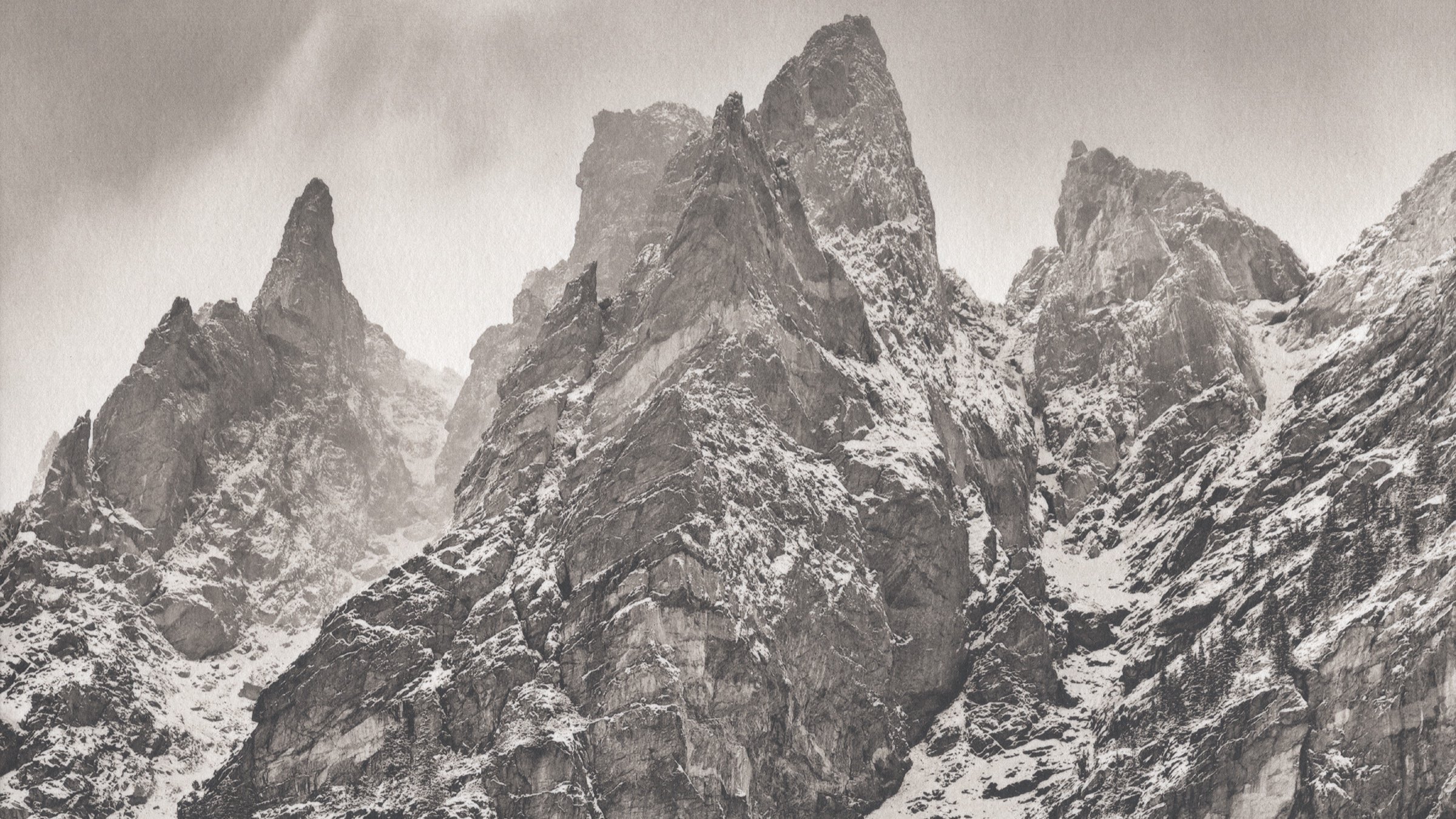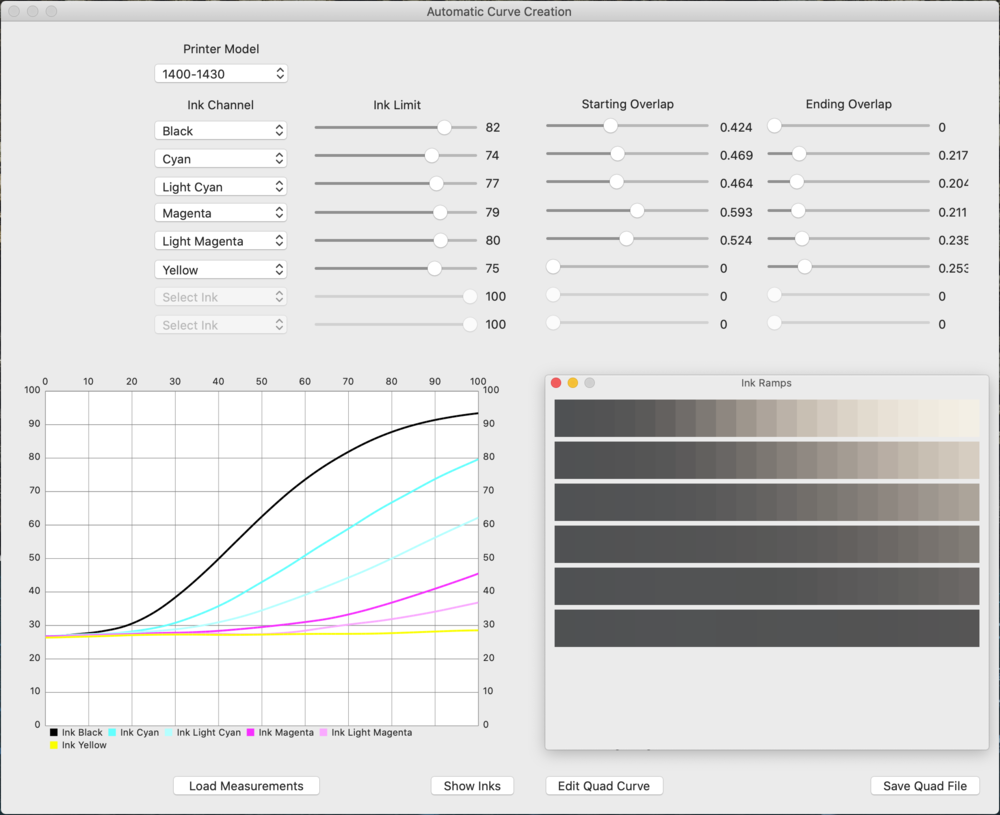
QuadToneProfiler-DN-Pro
Advanced Calibration software for digital negatives
QuadToneProfiler-Pro DN
for macOS
A native macOS inkjet negative profiling application
for even greater printer and ink set customization when using QuadToneRIP
NEW CUSTOM CURVE CREATION PROGRAM
The original QCDN prebuilt curves are still available to get up and running as fast as possible when using printers with the standard Epson K3 ink sets. But for photographers who really want to make the most of their process and printer, there is a powerful new curve creation program unlike any other.
The QuadToneProfiler-Pro automatic curve creation system will balance and partition quad curve files from ink sets with up to 8 ink channels. You can use the new partitioning tools with the original Epson inks or any third-party ink set. The screenshot below is using the Cone Selenium K6 inks in an Epson 1430, but also works with PiezoPro dual-quad/quint dilutions, Sandy King’s K8 dilutions, or any combination of Epson K3 and color inks.
The curve creation system is based around a set of measurements from print of an ink separation negative and will let you do the following:
Control ink limits and starting and ending overlaps on a channel-by-channel basis.
Automatic correction from measurements of the ink separation image.
Real-time partitioning, correcting, and balancing the inks when updating the limits or overlaps.
Intuitive graphs and color samples for previewing the ink limits and graphs of the partitioned quad curves.
Use a powerful custom curve editor to further reshape and smooth each channel.
Add and shape additional ink channels not included in gray curve partitions.
Apply a gamma and boost adjustment before saving the final starter curve for the linearization steps.
Linearization Features
Gray Curve Linearization
The linearization system (v2) has been completely rewritten to allow for greater insight and control of measurements and correction curves. New color previews and CIELab readouts show the original and corrected output with sample patches and previews using your own images. The linearization tools will also let you save .acv curves and .cube color LUT files for use with Photoshop adjustment layers when you can’t print with QuadToneRIP or when sending files to a service bureau.
The manual output curve controls now work just like a curve adjustment in an image editor to fine tune final tonality in the final print. Additionally, the new manual curve controls can now allow you to make separate curves for duotone and multiple-layer processes like gum or cyanotype over palladium, or multi-layer carbon transfer prints.
Color Tint Linearization
Linearize the color tint for color separation negatives used with tri-color gum bichromate or multi-color carbon transfer printing. The SCTV linearization tools use a different formula based on all three channels of the CIELab measurements that make a consistent perceptual output for both brightness and color. These corrections can be saved as .quad files for use with QTR or saved as .acv or .cube files for use with Photoshop when making image setter negatives with a service bureau.
Blending, Editing, and More
Blend any two quad curve files together that can be used for adding additional blocking colors, blending dual tri/quad/quint ink sets, or two curves linearized at different printing times. This is really useful for achieving even more overlap from adjacent shades for even smoother final prints
Quad Ink Remapping and Printer Model Migration Utilities
Swap or duplicate ink channels with an easy to use interface and visual feeback of the edited quad file before saving. This eliminates the need to open the .quad file in a text editor and removes the potential for corrupting the quad file with incorrect numbers of ink values or ink names.
Update or transfer a quad file from printer models with differing ink sets or cartridge positions.
Edit each ink channel individually to fine tune the smoothness, the overall shape, and the additional overlap as needed. The boost and gamma controls can be useful for lightening or darkening the final print when applying multiple coatings or printings from separation negatives.
SYSTEM REQUIREMENTS
macOS High Sierra (10.13) through Ventura (13.x)
Any Epson Printer supported by QuadToneRIP
QuadTone RIP to serve as the print driver for macOS
PrintTool (on macOS) for printing the calibration images without color management and easier printing in general
A measurement device and software
SUPPORTED PRINTERS
Any QuadToneRIP-supported Epson printer and ink set (OEM or Custom)
SUPPORTED MEASUREMENT DEVICES
i1 Pro rev D,E,F with i1Profiler, ArgyllCMS
DTP-70 and SpectroScan automated chart readers with ColorPort
ColorMunki or i1 Studio with ArgyllCMS
SpyderPrint
Manual densitometers
Reflective flatbed scans using QuadToneRIP StepWedge Tool (with recommended Kodak/Tiffen Q13 grayscale calibration target)
SUPPORTED MEASUREMENT FILE FORMATS
CGATS .txt
ArgyllCMS .ti3
SpyderPrint .txt
ColorMunki .csv
QTR-Linearize Data -out.txt
DataTool .txt
Single Column logD density measurements








